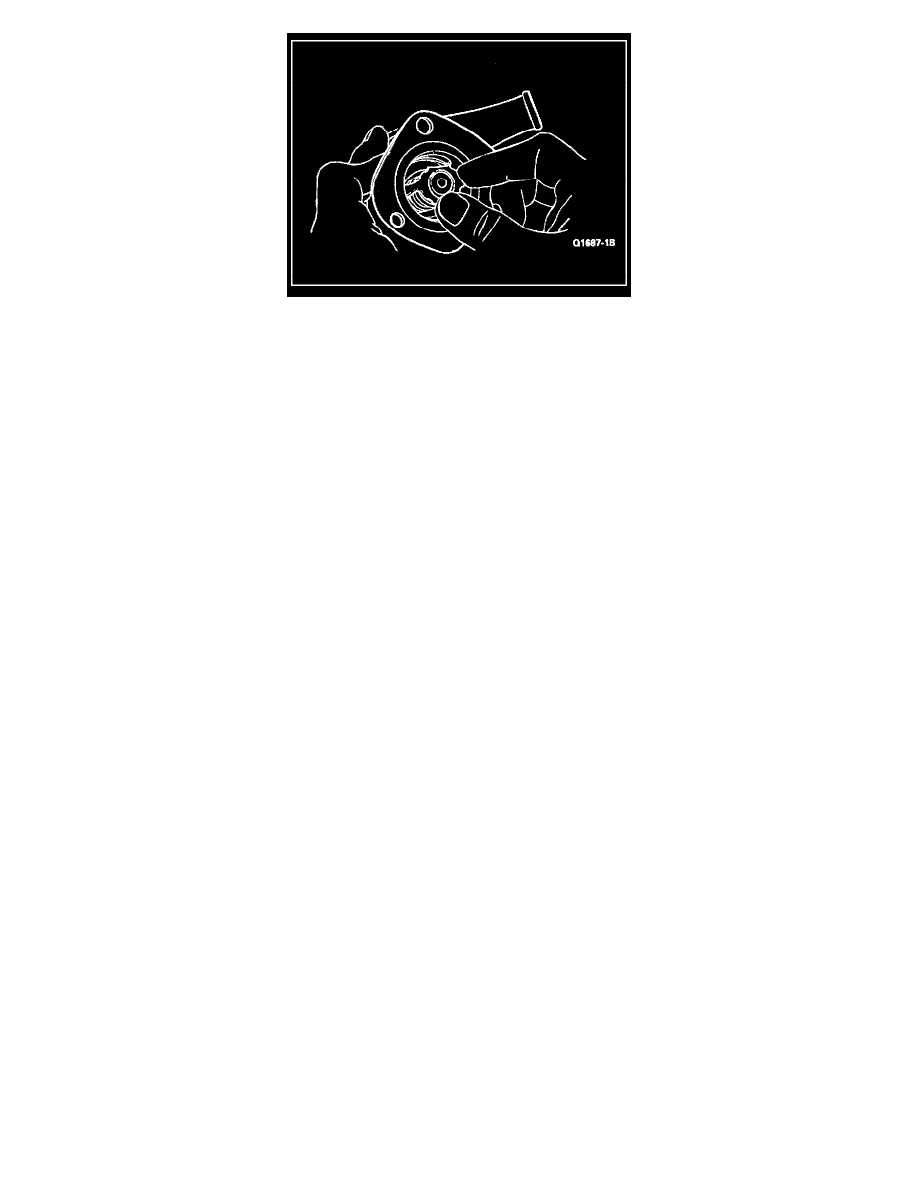Ranger 2WD V6-245 4.0L VIN X SFI (1997)

FIG. 3 Thermostat installation
INSTALLATION
WARNING: DO NOT STAND IN LINE WITH OR NEAR RADIATOR FAN BLADE WHEN ENGINE IS RUNNING.
CAUTION: The thermostat seal must be positioned on the water outlet connection before the water thermostat is installed.
To prevent incorrect installation of the water thermostat, the water outlet connection casting contains a locking recess into which the water thermostat
is turned and locked. Install the water thermostat with the bridge section in the outlet casting. Turn the water thermostat clockwise to lock it in position
on the flats cast into the water outlet connection.
1. Clean the upper radiator hose connection cylinder head and water outlet connection surfaces. Coat a new thermostat housing gasket with Perfect
Seat Sealing Compound B5A-19554-A or equivalent meeting Ford specification ESE-M4G115-A. Position the thermostat housing gasket on the
cylinder head opening.
It is critical that the correct water thermostat installation alignment be made to provide coolant flow to heater. Insert and rotate water thermostat to
the left or right until it stops in the water outlet connection housing, then visually check for full width of heater outlet tube opening to be visible
within the thermostat port in assembly.
This port alignment at assembly is required to provide maximum coolant flow to the heater.
2. Position the coolant water outlet connection against the cylinder head, intake manifold or water pump. Install and tighten the retaining bolts to
20-30 Nm (14-21 ft. lbs.).
3. Connect the upper radiator hose to water outlet connection.
4. Fill the cooling system with the recommended Premium Cooling System Fluid E2FZ-19549-AA or equivalent meeting Ford specification
ESE-M97B44-A and water mixture. Check for leaks and proper coolant level after the engine has reached operating temperature.
A coolant mixture of 50 percent ethylene glycol and 50 percent water is recommended to maintain best overall performance. To avoid damaging
the radiator, the ethylene glycol should not exceed 60 percent.
